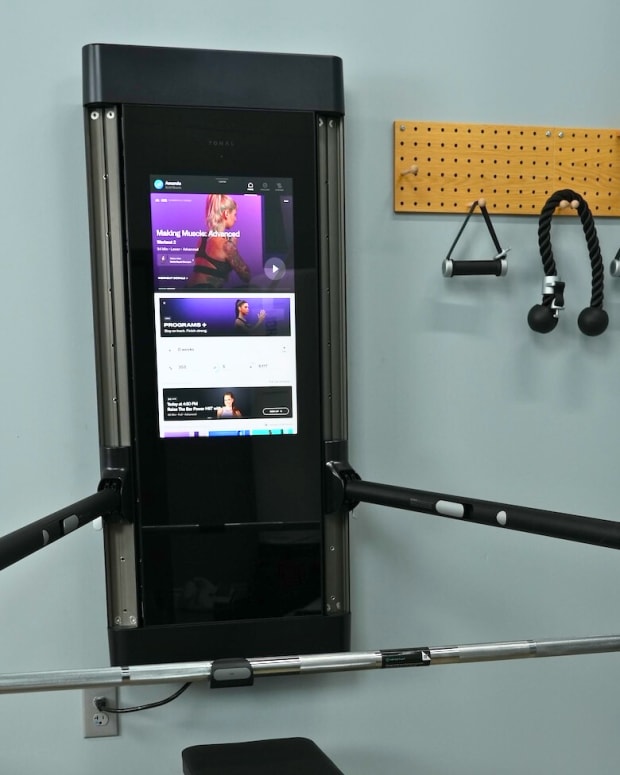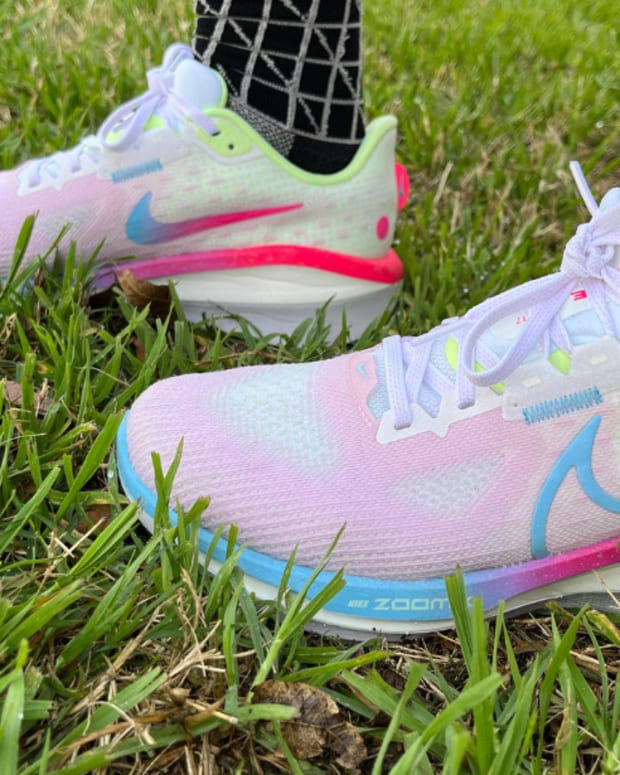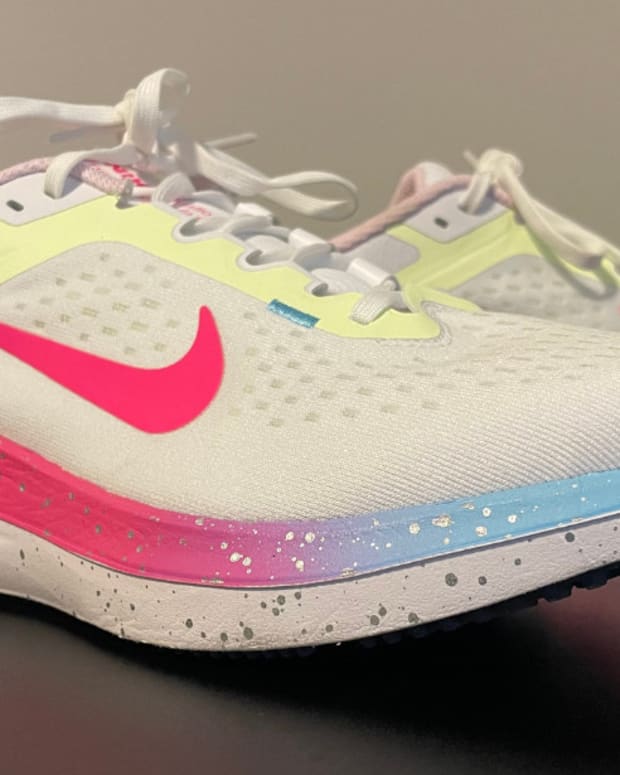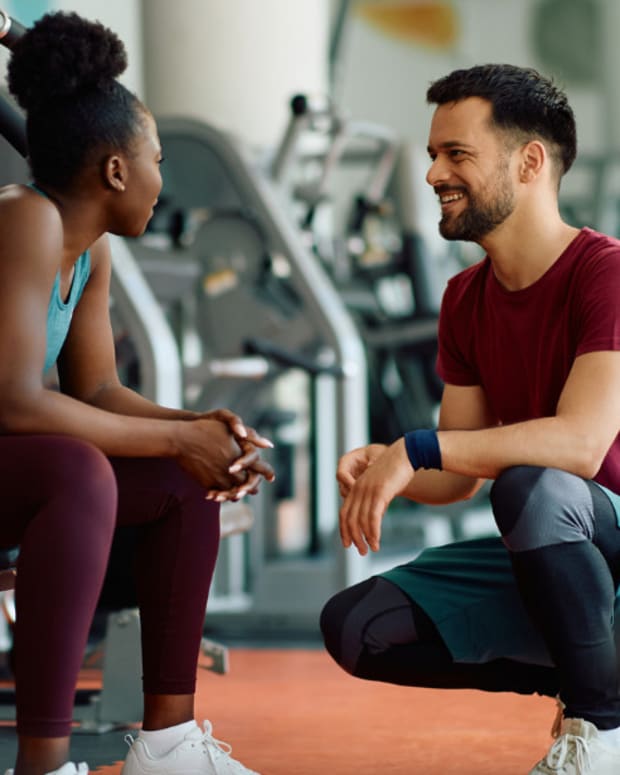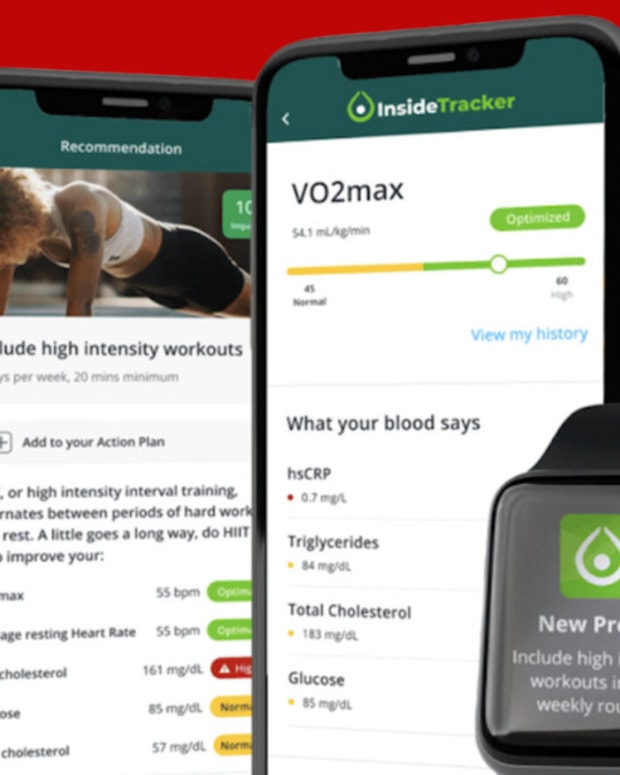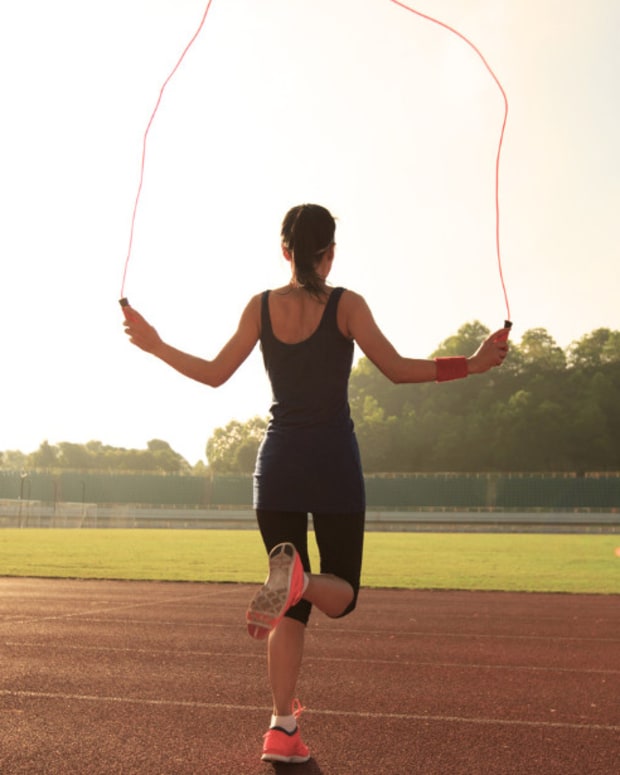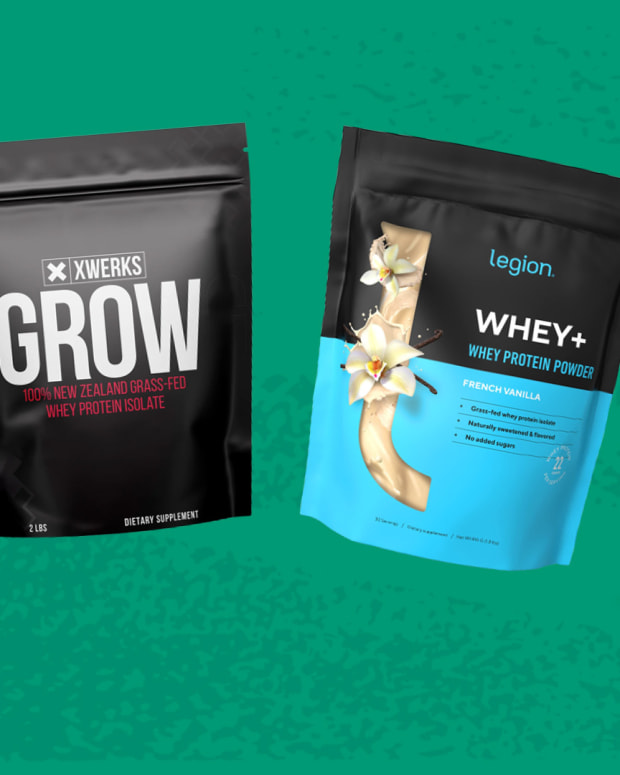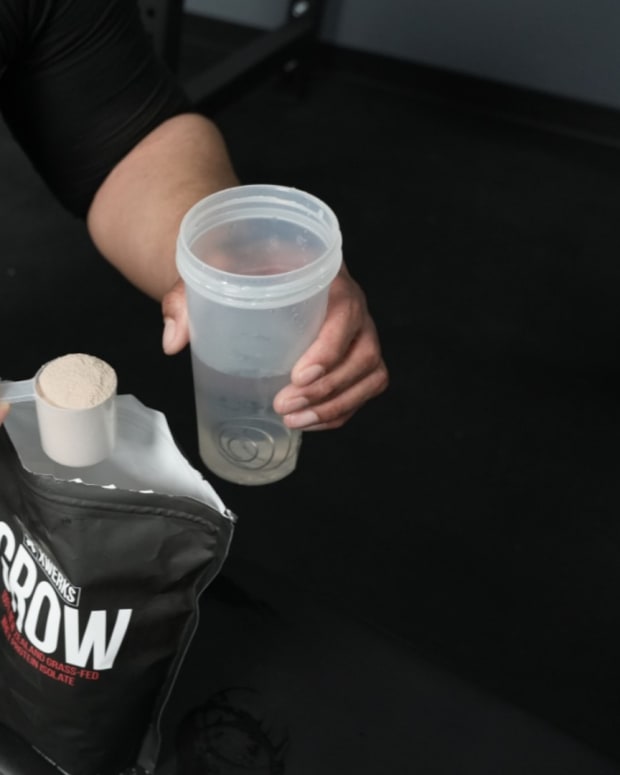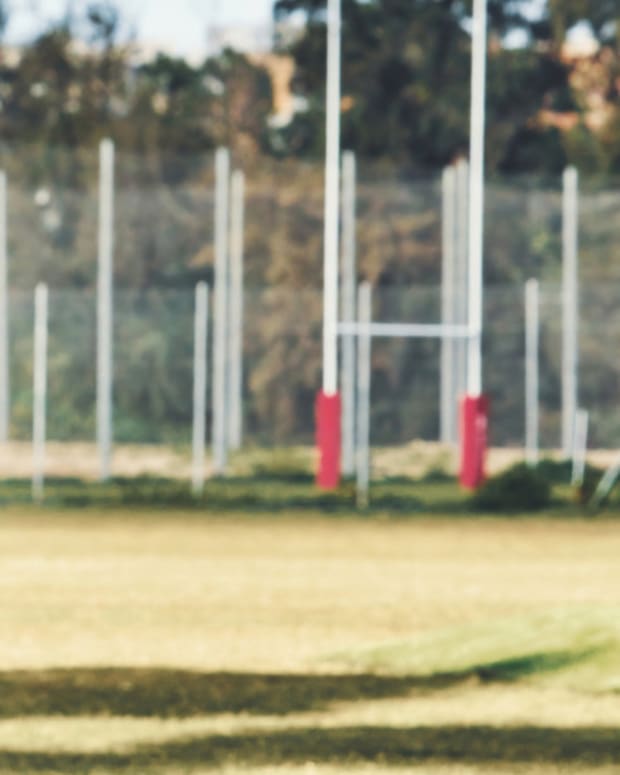The products featured in this article have been independently reviewed. When you buy something through the retail links on this page, we may earn commission at no cost to you, the reader. Sports Illustrated editorial staff are not involved in the creation of this content. Learn more here.
If you’re a seasoned runner, you know that the right shoes are important for preventing injury and supporting you through the miles, but if you’re new to the sport, the choices are overwhelming.
The American Podiatric Medical Association (APMA) recommends that if you participate in an activity two to three times per week, you should wear shoes meant to support you for that activity. Runners risk injuries such as plantar fasciitis, shin splints and stress fractures, and wearing the right shoes can help to prevent that. Running shoes are designed to help absorb some of the shock from the impact of your feet pounding on the ground and to reduce stress on your feet and provide ankle stability.
Whether you’ve been logging miles for a while and you aren’t as in love with your go-to shoe as you once were, or if you’re prepping to run your first 5K, the list below will point you in the right direction of your new favorite pair in 2024.
Related Post: The Best Running Apps for Every Runner
Our Picks for the Best Women’s Running Shoes of 2024:
- Best Road Running Shoes For Women: adidas Ultraboost Light
- Best Cushioned Running Shoes For Women: Skechers GOrun Max Road 6
- Best Supportive Running Shoes For Women: Hoka Clifton 9
- Best Training Shoes For Women: adidas Adizero Boston 12
- Best Trail Running Shoes For Women: Salomon Ultra Glide 2
- Best Running Shoes For Women With High Arches: On Cloudstratus
- Best Stability Running Shoes For Women: Saucony Guide 16
- Best Rated Running Shoes For Women: Asics Gel-Venture 8
- Best Running Shoes For Women with Larger Bodies: Brooks Glycerin 20
Best Road Running Shoes for Women: adidas Ultraboost Light
- Weight: 9.2 ounces
- Price: $190
The adidas Ultraboost Light is the brand’s lightest shoe ever. Don’t let the weightless design fool you —the Continental Rubber outsole offers grip for any surface and weather condition. You may think this makes for a stiff shoe, but adidas designed it with enough flexibility to allow for a smooth experience with each stride. Boost technology supports your performance by providing energy return with every step on the otherwise unforgiving road terrain. Additionally, PrimeKnit technology in the shoe’s upper offers a sock-like fit for desirable comfort. These shoes are great for anyone looking for a, lightweight, high-performance shoe for any road running endeavor.
Pros:
- Super lightweight
Cons:
- Some reviewers complain that they scuff easily
- Pricey
Best Cushioned Running Shoes For Women: Skechers GOrun Max Road 6
- Weight: 8.5 ounces
- Price: $145
The Skechers GOrun Max Road 6 are the ultimate shoe for your feet. These shoes evenly disperse weight, providing shock absorption for a comfortable run. Podiatrist-certified arch support means optimal foot support. These lightweight shoes are made with Skechers’ Hyper Burst Ice Technology, which offers a a bouncy running experience.. Carbon plates add midsole stability and structure. If you’re a runner who prefers a cushioned ride, these are the shoes for you.
Pros:
- True to size
- Breathable mesh upper
Cons:
- Not made for runners with wide feet
Best Supportive Running Shoes for Women: Hoka 9
- Weight: 7.3 ounces
- Price: $145
The Hoka Women’s Clifton 9 is a neutral shoe that provides support and cushioning on the run. Hoka shoes are designed with a compression-molded insole for the signature cushion you’ve come to expect from the brand. The meta-rocker sole ensures a smooth ride. Reach for this shoe if you’re looking for a solid, daily go-to.
Pros:
- This is a supportive everyday trainer for runs or if you work a job where you are on your feet for long hours.
Cons:
- If your training day calls for speedwork, you’ll need to try a different shoe.
Best Training Shoes for Women: adidas Adizero Boston 12
- Weight: 8 ounces
- Price: $160
The adidas Adizero Boston are lightweight shoes made for fast-paced runs, and are also durable enough to withstand long mileage days. The Adizero Boston 12 is constructed with intentional support areas to create optimal midfoot stability, while also maintaining forefoot flexibility. The lightweight mesh upper provides necessary ventilation and breathability. Responsive cushioning for shock absorption and energy return propel you forward during speedwork and help keep you going over long distances. The Continental rubber outsole offers exceptional grip no matter where your run takes you. The shoe offers versatility for a range of running distances and speed, making it the perfect daily training shoe.
Pros:
- Optimal foot stability
Cons:
- Narrow fit
- Not the best option for short, fast-paced runs
Best Trail Running Shoes for Women: Salomon Ultra Glide
- Weight: 239 grams
- Price: $140
The Salomon Ultra Glide is a trail running shoe through and through. The grip on the soles is designed to carry you confidently over mixed terrain trail runs. The maximally cushioned trail running shoe is made for the everyday runner and will allow you to comfortably go the distance and feel confident on the terrain.
Pros:
- A cushioned shoe made for the everyday trail runner.
- Reviewers love that they are lightweight and provide excellent traction on the trails.
Cons:
- Some reviewers say that the wider toe box makes it hard to get a snug fit.
- The shoes are not waterproof, so if you’re running on wet or muddy trails, the shoes won’t offer protection.
Best Running Shoes for Women with High Arches: On Cloudstratus
- Weight: 8.75 ounces
- Price: $169.99
The On Cloudstratus is designed for medium-distance runs with maximum cushioning. According to On, this model is best for those with wider feet. If you have high arches, you should choose a lightweight, neutral shoe with cushioning according to podiatrists. Additionally, you should choose a shoe that is comfortable for you. That’s where the Cloudstratus comes in. Reviewers love the ankle support and wider toebox.
Pros:
- This On model is best for those with wider feet.
- The On Cloudstratus is made specifically for running, while some other On models are made for walking or general wear.
- This model is great for running on roads, and can support you from 5K to marathon.
Cons:
- As the shoe has max cushioning, it’s going to be on the heavier side.
- This shoe wouldn’t work well for speedwork days.
Related Post: On CloudNova Review
Best Stability Running Shoes for Women: Saucony Women’s Guide 16
- Weight: 15.6 ounces (pair)
- Price: $140
If you need a stability shoe to help you confidently tackle those miles without sacrificing form, this is it. The Saucony Women’s Guide 16 is made with a firm, plastic stabilizer, making it a true stability shoe. The shoe is designed with a Saucony Pwrrun midsole, and reviewers say it feels softer than previous versions. Saucony has redesigned this version with higher sidewalls so your feet fit comfortably in them, for a cushioned underfoot ride, and new Pwrrun+ sockliners provide a comfortable fit. Reviewers agree that these shoes offer more support without sacrificing comfort than other stability shoes they’ve tried.
Pros:
- Features an updated design for a more comfortable fit
- The upper is made with breathable mesh.
- A good shoe for recovery days.
Cons:
- Some runners say the shoe feels heavy.
- A flat sole makes the shoe lack energy return.
Best-Rated Running Shoes for Women: Asics Women’s Gel-Venture
- Weight: 8.7 ounces
- Price: $70 (price can vary by size and color)
Reviewers love the Asics Gel-Venture for its stability and durability. The Asics Gel-Venture 8 offers cushion to smooth out your ride, leaving you able to complete your miles in comfort. Note that this shoe may have more tread than you’re used to, as they are designed for the trails and off-road traction.
Pros:
- Runners love this shoe for its fit and durability.
- The tread is made with traction in mind so you feel confident on the run, whether it’s uneven terrain or mud and rain.
- A good budget shoe.
Cons:
- Some reviewers say they require breaking in.
- Some runners find the shoe runs small.
- The aggressive tread of the shoe makes it best for trail running, so if you mainly run on pavement this might not be the best choice.
Best Running Shoes for Women with Larger Bodies: Brooks Glycerin 20
- Weight: 9.1 ounces
- Price: $160
The Brooks Glycerin offers cushioned support with supportive, thick soles for comfort and durability underfoot. For heavy runners, it’s important to look for shoes with supportive soles so they won’t break down as quickly as light foam shoes. The Brooks Glycerin also comes in Brooks Glycerin GTS, so if you need more arch support rather than neutral to help keep an efficient stride, this version is equipped with Brooks GuideRails Go-To Support.
Pros:
- A comfortable and supportive shoe.
- This neutral, cushioned trainer is good for logging long miles or slow recovery runs.
Cons:
- As this shoe provides the most cushion of any Brooks offering, it’s also the heaviest.
What Kinds of Women’s Running Shoes Are There?
There are many different kinds of women’s running shoes. While previously most running shoes were all made the same for men and women, brands including adidas have recently begun to use scans of women’s feet to make shoes specifically tailored to improve female performance.
What to Look for in Running Shoes
The APMA recommends that if you participate in an activity two to three times per week, you should wear shoes made for that specific activity. Additionally, the American College of Sports Medicine (ACSM), suggests you look for a shoe with minimal heel-to-toe drop (the height difference between the heel and toe).
Intended Use
Wearing proper running shoes is important to protect yourself from injury. Running shoes are designed with a cushioned sole to ensure proper running mechanics.
Fit
To ensure proper fit, you’ll want to employ the help of a specialist. A podiatrist can help you determine the arch of your feet, which will determine the type of shoe that will properly fit your feet. You’ll also want shoes that have enough room in the toe box so your feet are not jammed up against the end, but are snug enough so your heels don’t slip.
Cushioning
The cushioning you choose for your running shoes also depends on the arch of your feet, your stride and personal preference.
Weight
According to the ACSM, runners should look for shoes that are light in weight, for example less than 10 ounces for a men’s size 9 or 8 ounces or less for a women’s size 8.
Cost
Running shoes can range in cost from about $100 to $200 and up, depending on the style, brand and purpose. However, you can also keep an eye out for sales. Another money-saving tip: As new shoe models come out each year, brands discount the previous iteration.
How to Use Women’s Running Shoes
How long should you keep running shoes?
This depends on many factors, including shoe type, stride type and what the shoes are used for. The APMA suggests you replace your shoes every 600–800 miles or every six to eight months.
Studies have found that after about 466 miles (750km) that structural damage can occur in the shoes. This may lead to reduced cushioning in the heel and an increase in potential injuries, especially for heel strikers. The general rule of thumb is 300 and 500 miles of use, however this can vary. If you have flat feet or overpronate, your shoes will wear out more quickly on the inner edges of the sole. If you have high arches, which can lead to underpronation, the outside edges of your sole will show wear first.
Are running shoes good for walking?
Since running shoes are designed for durability and support, they also make excellent walking shoes. Cushioned running shoes can provide comfort on your walks. Like running shoes, be sure you purchase the right shoes for your feet.
Related Post: The 8 Best Walking Shoes for Women
How do I find the right shoes for my feet?
You can employ the help of a podiatrist or sports medicine specialist to assess your foot’s arch and your stride. Brands like Brooks also have quizzes on their site that can help you to determine which type of shoe is right for you.
Should I go up a size in running shoes?
When you buy running shoes, you should size your feet. The ACSM also suggests buying running shoes at the end of the day or after being on your feet for a long period of time when they are as swollen as they get.
Running shoe buying tips from the ACSM:
- Be sure the shoe has a wide toe box.
- There should be at least ½ inch of room between the toes and front of the shoe (space to place the thumb between your big toe and the front of the shoe.
- To test if the shoe is too narrow, take the insert out of the shoes and step on them on the ground. If your foot hangs over the edge, they are too narrow.
- Test running in the shoe to be sure that the heel does not slip.
Prices are accurate and items in stock as of publish time.










